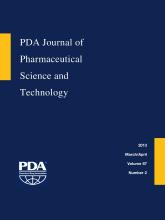Abstract
Because traditional drug delivery poses many disadvantages such as poor compliance of patients and a drug plasma level variation, novel drug delivery systems containing controlled release drug vehicles become attractive. In this study, a kind of tri-block copolymer consisting of polycaprolactone (PCL) and poly(ethylene glycol) (PEG), PCL-PEG-PCL, were synthesized by a rapid microwave-assisted and a conventional synthesis method to form an in situ gelling system that provides a controlled release of drugs over a long period of time. Copolymer characterization was performed using a gel permeation chromatography, the 1H-NMR, and a phase transition behavior evaluation. Vancomycin hydrochloride and amphotericin B were used as drug models here. This study confirmed that the synthesis of the copolymer using microwave irradiation was the most effective method to prepare this smart copolymer. Results also demonstrated the better performance of the microwave-synthesized copolymer regarding its phase behavior. It was shown that gelatin temperatures were also affected by the hydrophilicity of the drug model, the copolymer concentration, and the media. It was indicated that the hydrogels could sustain the delivery of model drugs for about 17 to 20 days. As the drugs used in this study were both large molecules and the main release mechanism was copolymer bulk erosion rather than simple diffusion, the effect of drug and copolymer concentration on the drug release profile was not so significant.
LAY ABSTRACT: Different studies have been carried out to improve drug delivery systems. Smart drug vehicles such as thermoresponsive and in situ forming hydrogels made of tri-block copolymers are promising systems in this field. Thermoresponsive hydrogels can release loaded molecules in response to the changing temperature. In situ forming hydrogels are the kind of thermoresponsive materials that are injectable fluid (sol) at room temperature and gel at body temperature. Pharmaceuticals release gradually from the gel over long periods of time. Here we investigated the in situ forming hydrogel based on poly(caprolactone)–poly(ethylene glycol)–poly(caprolactone) as a drug delivery system. Vancomycin hydrochloride and amphotericin B were used in this study as a model. The results indicated that this system can control release pattern of drug perfectly for approximately 20 days.
- © PDA, Inc. 2013
PDA members receive access to all articles published in the current year and previous volume year. Institutional subscribers received access to all content. Log in below to receive access to this article if you are either of these.
If you are neither or you are a PDA member trying to access an article outside of your membership license, then you must purchase access to this article (below). If you do not have a username or password for JPST, you will be required to create an account prior to purchasing.
Full issue PDFs are for PDA members only.
Note to pda.org users
The PDA and PDA bookstore websites (www.pda.org and www.pda.org/bookstore) are separate websites from the PDA JPST website. When you first join PDA, your initial UserID and Password are sent to HighWirePress to create your PDA JPST account. Subsequent UserrID and Password changes required at the PDA websites will not pass on to PDA JPST and vice versa. If you forget your PDA JPST UserID and/or Password, you can request help to retrieve UserID and reset Password below.






